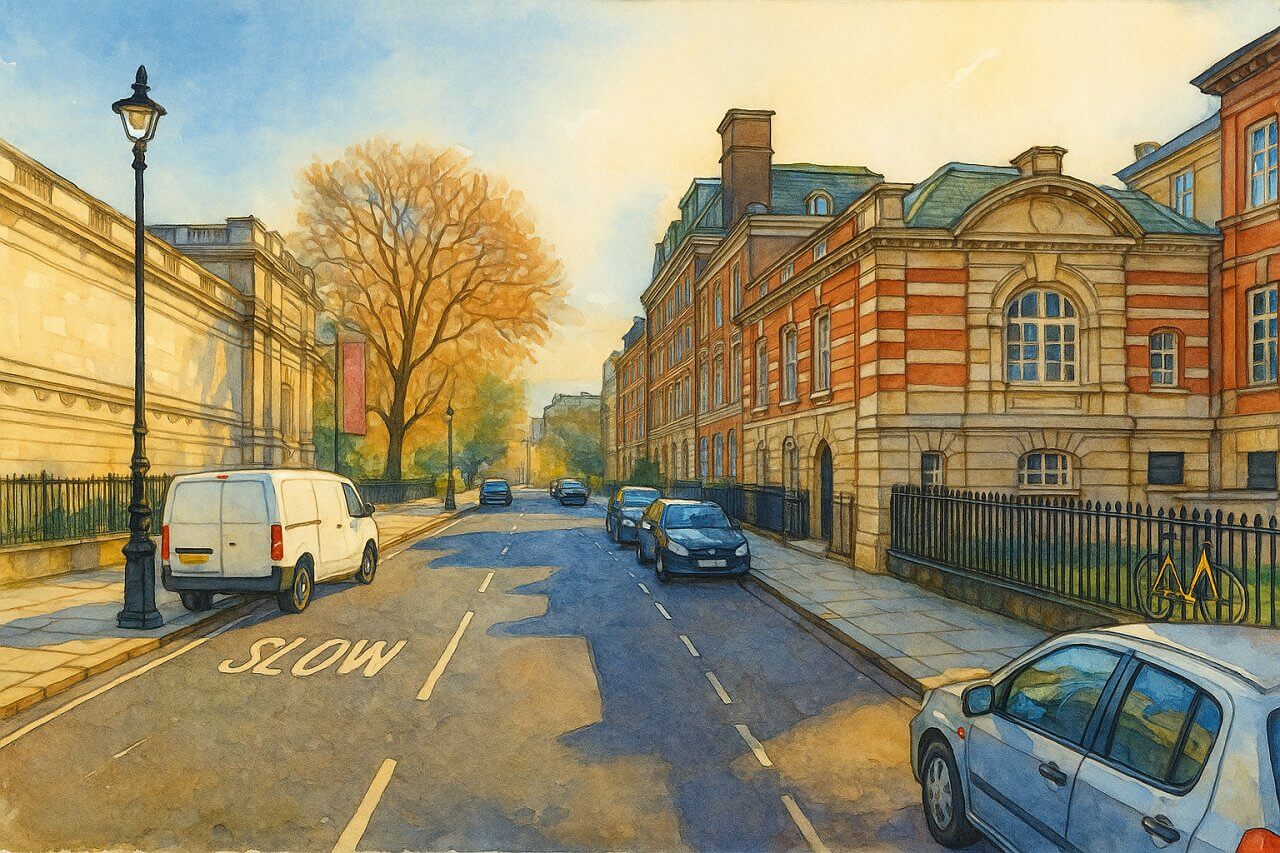
Atterbury Street, London
Connecting Millbank and John Islip Street in the heart of Westminster, Atterbury Street is a quiet yet historically significant road close to the Thames.
Atterbury Street is located in the City of Westminster, Central London. It runs in an east–west direction, linking Millbank on its eastern end to John Islip Street on its western end. The street sits just a short walk from the River Thames and lies within a peaceful zone of government buildings, cultural institutions, and high-end residences.
This area of Westminster is particularly known for its proximity to Tate Britain, Millbank Tower, and the attractive riverside walkways of the Thames Path.
Length and Layout of the Street
Atterbury Street is relatively short in length—measuring approximately 300 feet (about 91 metres). Despite its brevity, the street plays a notable role in providing vehicular and pedestrian access between Millbank and the streets just west of it. It runs directly parallel to the gallery wing of Tate Britain and is often used by museum visitors and local office workers alike.
The History of Atterbury Street
Atterbury Street is a 20th-century creation that emerged from the post-industrial transformation of the Millbank area. Originally part of the extensive redevelopment that occurred after the closure of Millbank Prison in the late 19th century, the street gained its identity during the re-planning of Westminster's southern districts in the early 1900s.
The entire Millbank area has long been associated with the history of penal reform, art institutions, and government offices. Atterbury Street, though small, sits within this broader historical context and reflects Westminster’s effort to create better access routes and residential blocks in place of former industrial and institutional buildings.
Origin and Meaning of the Name
The street is named after Francis Atterbury (1663–1732), an English bishop and politician. Bishop Atterbury was a prominent figure in the Church of England and a noted Jacobite sympathiser. Naming the street after him reflected the 19th- and early 20th-century trend of commemorating historical and ecclesiastical figures in Westminster street names.
The street's name likely came into official use in the early 20th century as part of the general naming of new roads created during the post-prison redevelopment of the Millbank Estate.
How to Pronounce "Atterbury"
Atterbury is commonly pronounced as ˈætəˌbəri (AT-uh-buh-ree), with stress on the first syllable. A more phonetic spelling for visitors might be Atterburry.
The Character of the Street
Atterbury Street has a quiet and formal character. With the side wall of Tate Britain on one side and the Millbank Estate’s brick apartment blocks on the other, the street has an institutional yet calm atmosphere. The traffic is minimal, making it an excellent pedestrian route for visitors to nearby attractions or for local residents heading towards the riverside or nearby shops on Horseferry Road.
While the architecture lacks the ornamental flair of other Westminster roads, it is clean, orderly, and functional—typical of planned developments in the early 20th century.
Real Estate and Property Prices
Properties on or near Atterbury Street tend to be within the Millbank Estate, a historic housing estate consisting mainly of red-brick flats. These homes are generally mid-sized flats averaging 700–900 sq ft (65–84 sq metres).
As of May 2025, the average property price around Atterbury Street stands at approximately £775,000—slightly below the average for the wider Westminster borough, where prices often exceed £1 million. Rental values for a 2-bedroom flat hover around £2,800–£3,200 per month, reflecting the area's desirable central location and proximity to cultural and governmental institutions.
Nearest London Underground Stations
Atterbury Street benefits from excellent public transport access:
- Pimlico Station (Victoria line) – a 6-minute walk to the southwest.
- St James’s Park Station (District and Circle lines) – about 12 minutes on foot to the northeast.
- Westminster Station (Jubilee, District, and Circle lines) – approximately 15 minutes’ walk along Millbank and past Parliament.
These stations ensure that Atterbury Street is well connected to key destinations across London.
Fun Fact: Tate Britain’s Quiet Side
Most visitors enter Tate Britain through the grand riverside entrance on Millbank. However, the side entrance on Atterbury Street is a lesser-known way in—and often much quieter. It’s the preferred entrance for many art students and locals in the know, as it leads directly to the Clore Gallery, home to the Turner Collection.
In fact, the Atterbury Street side has been featured in various photography collections thanks to the dramatic curve of the Clore Gallery’s modernist extension.
Quick Facts
- Location: City of Westminster, London
- Connects: Millbank (east) to John Islip Street (west)
- Length: Approx. 300 feet (91 metres)
- Name Origin: Named after Bishop Francis Atterbury
- Pronunciation: AT-uh-buh-ree /ˈætəˌbəri/
- Character: Quiet, institutional, pedestrian-friendly
- Nearby Landmarks: Tate Britain, Millbank Tower, Thames Path
- Average Property Price (2025): £775,000
- Typical Flat Size: 700–900 sq ft (65–84 sq metres)
- Nearest Tube Stations: Pimlico (Victoria), St James’s Park (District, Circle), Westminster (Jubilee, District, Circle)
- Fun Fact: Side entrance to Tate Britain on Atterbury Street leads directly to the Turner Collection
Map of Atterbury Street, London

Painting of Atterbury Street, London (View image in full size)